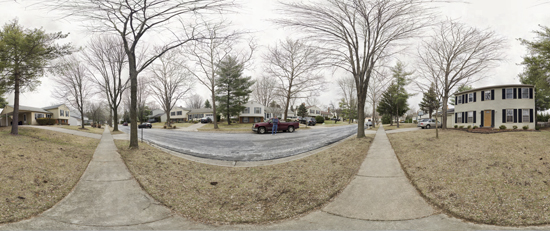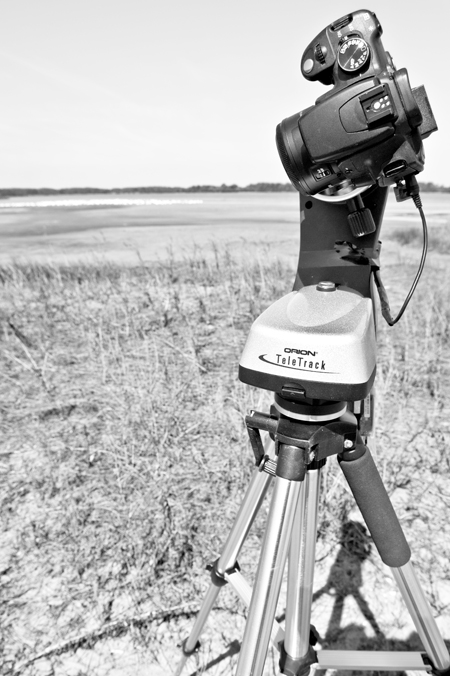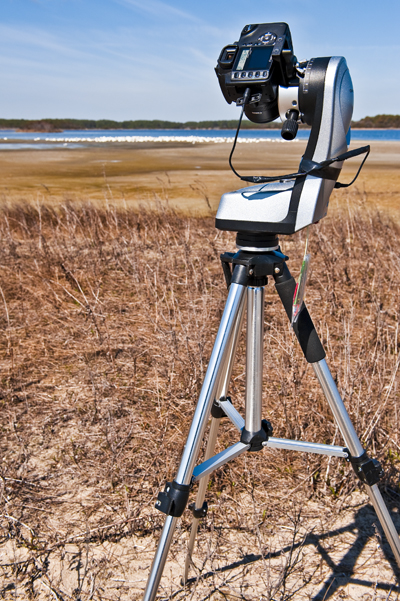
A 12 megapixel camera can be used to collect a realistic 360 degree panorama by taking 5 rows of 15 images in sequence. That’s 75 images in all. It’s also 75 times you need to snap the camera, and 74 times you need to realign the camera.  What if you wanted to double the rows and/or columns in the panorama? What if the size of the panorama generated were so large that you could not read it into memory and stitch it in one shot?
What if you wanted to double the rows and/or columns in the panorama? What if the size of the panorama generated were so large that you could not read it into memory and stitch it in one shot?
As you get more ambitious, the panorama capture and process becomes more tedious. To get around this, you need a robotic capture system. There are several complete commercial systems out there, though many of them have significant limitations with respect to the weight they can manage, and for the cameras they support. There is no surprise here, but when it comes down to it, the best bang for your buck is building your own robotic mount yourself!
It turns out that there is a reasonably priced motorized tripod mount called the Orion Teletrack(Merlin in Europe) that a few smart people (Frédéric Mantegazza and Claude Vanhemmens to name two) have figured how to convert into a motorized panorama collection systems. Frédéric Mantegazza even wrote software called PapyWizard which guides the Orion through the collection process.
In order to get the Orion to work, you need some clever bits and pieces of hardware and software. First, the Orion obtains its information via commands it receives on its hand-controller jack which is RS-232 based. The serial port is a 5 volt TTY interface. In order to generate the necessary commands to the Orion, you need a small computer. For this task, an old Nokia 770 tablet with the hacker’s 2007 edition of the OS will do. In order for the Nokia to communicate with the Orion wirelessly, you can use its Bluetooth capability. To receive the Bluetooth signal, a Parallaxboard can be used. The benefit of this board is that it can receive the Bluetooth commands and directly convert them into the exact TTY signal the Orion needs. Furthermore, it can consume the Orion’s power right from the mount itself (8 AAs).
Once the Nokia is loaded with the Papywizard software, the commands can be sent wirelessly to the robotic mount over the Bluetooth paired connection. Before collection can begin, however, the Papywizard needs to know what you want to capture, and the characteristics of your camera and lens. To produce the panorama correctly, you will also need to make sure that the camera’s lens is placed over its nodal point. The Orion comes with a bracket that lets the camera slide forward and backward in the portrait position making this part easy to do. The Digital Rebel XT pictures on the right is shown with its 50mm lens in the nodal position.
to the robotic mount over the Bluetooth paired connection. Before collection can begin, however, the Papywizard needs to know what you want to capture, and the characteristics of your camera and lens. To produce the panorama correctly, you will also need to make sure that the camera’s lens is placed over its nodal point. The Orion comes with a bracket that lets the camera slide forward and backward in the portrait position making this part easy to do. The Digital Rebel XT pictures on the right is shown with its 50mm lens in the nodal position.
If the mount is kept level, all the pictures are acquired in their correct positions, and the lighting doesn’t change significantly during the collection, stitching a panorama out of all these images can still be difficult. In order for the panorama stitching process to work, it is helpful if none of the adjacent snapshots (25% to 30% overlap) contain subjects in motion. Stitching may also fail when there is not enough detail (control points) to distinguish one image from another – for example – in a large solid blue filled sky. Commercial panorama stitching software can handle most of these situations, but with a large number of images, its best to avoid as many problems as you can in the collection phase.
|
|
Please enable Javascript!
|
|
Please enable Javascript!